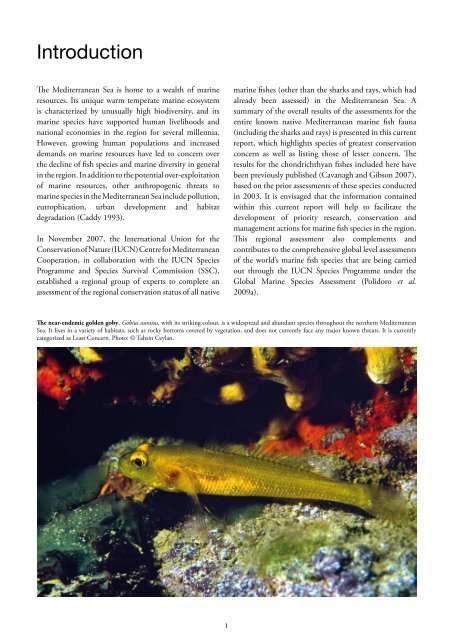MEDITERRANEAN - Greenpeace
MEDITERRANEAN - Greenpeace
MEDITERRANEAN - Greenpeace
You also want an ePaper? Increase the reach of your titles
YUMPU automatically turns print PDFs into web optimized ePapers that Google loves.
Introduction<br />
The Mediterranean Sea is home to a wealth of marine<br />
resources. Its unique warm temperate marine ecosystem<br />
is characterized by unusually high biodiversity, and its<br />
marine species have supported human livelihoods and<br />
national economies in the region for several millennia.<br />
However, growing human populations and increased<br />
demands on marine resources have led to concern over<br />
the decline of fish species and marine diversity in general<br />
in the region. In addition to the potential over-exploitation<br />
of marine resources, other anthropogenic threats to<br />
marine species in the Mediterranean Sea include pollution,<br />
eutrophication, urban development and habitat<br />
degradation (Caddy 1993).<br />
In November 2007, the International Union for the<br />
Conservation of Nature (IUCN) Centre for Mediterranean<br />
Cooperation, in collaboration with the IUCN Species<br />
Programme and Species Survival Commission (SSC),<br />
established a regional group of experts to complete an<br />
assessment of the regional conservation status of all native<br />
marine fishes (other than the sharks and rays, which had<br />
already been assessed) in the Mediterranean Sea. A<br />
summary of the overall results of the assessments for the<br />
entire known native Mediterranean marine fish fauna<br />
(including the sharks and rays) is presented in this current<br />
report, which highlights species of greatest conservation<br />
concern as well as listing those of lesser concern. The<br />
results for the chondrichthyan fishes included here have<br />
been previously published (Cavanagh and Gibson 2007),<br />
based on the prior assessments of these species conducted<br />
in 2003. It is envisaged that the information contained<br />
within this current report will help to facilitate the<br />
development of priority research, conservation and<br />
management actions for marine fish species in the region.<br />
This regional assessment also complements and<br />
contributes to the comprehensive global level assessments<br />
of the world’s marine fish species that are being carried<br />
out through the IUCN Species Programme under the<br />
Global Marine Species Assessment (Polidoro et al.<br />
2009a).<br />
The near-endemic golden goby, Gobius auratus, with its striking colour, is a widespread and abundant species throughout the northern Mediterranean<br />
Sea. It lives in a variety of habitats, such as rocky bottoms covered by vegetation, and does not currently face any major known threats. It is currently<br />
categorized as Least Concern. Photo: © Tahsin Ceylan.<br />
1

















